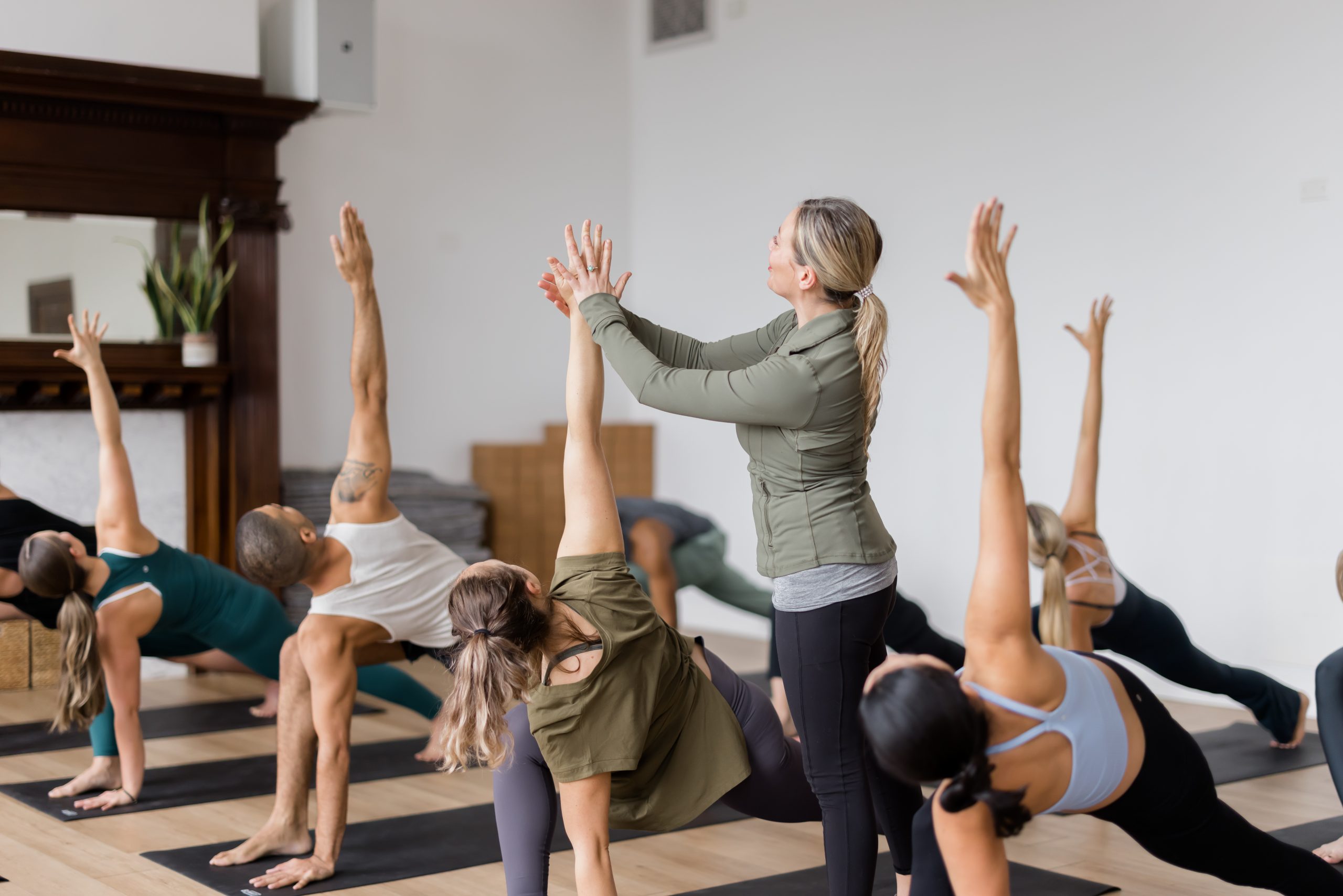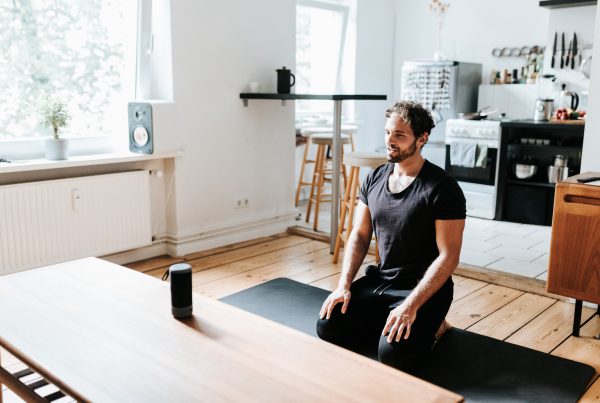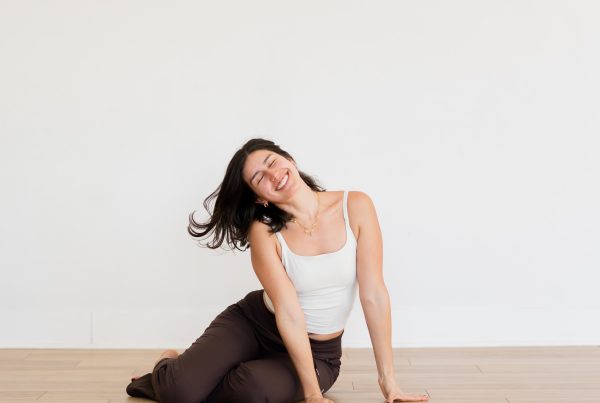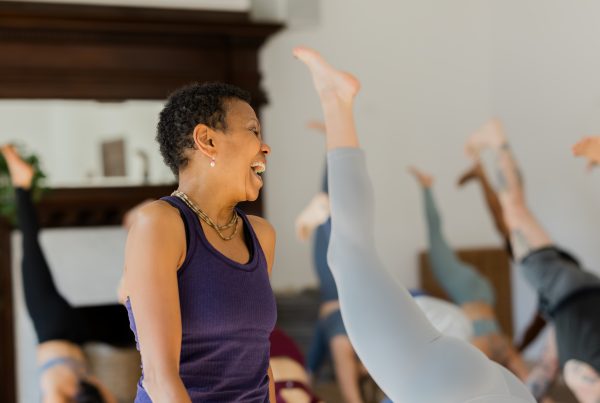
When I was in my 200 hour yoga teacher training, I remember being so excited to learn about the history of yoga and to discover how the practice made its way from India to the West. I was intrigued over the physical practice, the history, and how such ancient teachings were able to stay alive and live on. I didn’t have any assumptions or expectations about yoga history and I was very open to learning about the lineage of teachers.
Throughout my 200 hour teacher training, I started to become familiar with the names of Swami Vivekananda, B.K.S. Iyengar, Krishnamacharya, and Pattabhi Jois. All of these teachers were important and influential in making the yoga practice as accessible as it is today. I went on to also learn about the stories of certain gods and about the lives of different swamis. I was inspired, but I also eventually had to ask the question: What about the women?
As a yoga practitioner in New York City, I was used to taking classes from mostly women teachers. Whenever I’d walk into a yoga studio, the students were mostly women. Yoga classes and yoga teacher trainings were mostly taught by women and were attended by a lot of women, so I was very surprised that the history of yoga didn’t include more female teachers and influencers.
Women in Yoga Have Always Been There
I didn’t ask too many questions about women in yoga during my 200 hour teacher training, and I honestly didn’t do a ton of research to find out how they were a part of yoga history. I’d taken enough history classes in school to realize that social norms and gender roles often kept women out of the history lessons that we still learn today. I assumed that due to predominantly patriarchal cultures and domestic roles, women were left out of the narrative.
After I completed my 200 hour yoga teacher training, I began teaching almost immediately and I couldn’t help but notice how the majority of my colleagues were women. My desire to learn more about women in yoga grew and grew, so I began to read more yogic books by women authors. I dove into learning about the goddesses in Hindu culture, I became certified in prenatal yoga, and I began attending women’s workshops. I embraced the fact that I was a woman, surrounded by lots of other women, in a tradition that had perhaps been populated by only men.
As I continued to study more yoga philosophy, obtain more certifications, and deepen my own practice, I found myself getting frustrated and angry over how historically it seemed men pioneered the yoga movement, yet the women must have always been there.
Women in History
We know there are many, many important and influential women throughout the history of this world, but we also know that in many parts of the world, women’s’ roles were mainly domestic. A woman’s voice wasn’t always heard and things like an education or having a yoga practice were traditionally reserved for men. Thank goodness times have been changing, but that doesn’t excuse the silence that I often felt when it came to women in yoga.
If you really start to look into it, throughout both yoga philosophy and the evolution of the physical yoga asana practice, powerful and incredibly significant women have been the pioneers of sharing the knowledge and the practices we have today. I do believe we are moving in the direction of elevating the voices of women, acknowledging their stories, and recording them into what will become history books of the future.
Women in Yoga
I can personally get really worked up when I think about how the voices of women were silenced for so long, but I have a lot of hope for the future. It’s a powerful experience to be able to practice yoga and work in a woman dominated industry. I believe this is a huge step for women and we have a very bright future ahead.
Important Women in Yoga:
Draupadi
Draupadi is the princess in the great Indian epic, The Mahabharata. She is born from fire, and emerges as a powerful figure, defying the social norms of her time by marrying five brothers, showcasing her independence. Draupadi stands her ground whenever she is challenged, especially during a moment in court when she’s publicly humiliated, yet divinely protected, which highlights her dignity and the idea that righteousness prevails. Her courage to speak against injustice, even in a room full of powerful men, marks her as a beacon of truth and resilience. Her legacy is a timeless reminder that true strength comes from within, empowering generations of women to claim their rightful place in the world.
Indra Devi
Indra Devi was born in 1899 in Russia. She was so dedicated to her yoga practice that she traveled to India and convinced Krishnamacharya to be her teacher, even though he had never taught a woman before. She became one of the first recorded Western women to study yoga and then took it a step further by bringing it back to the West. Indra Devi broke barriers and showed that women could be leaders in fields that were dominated by men. She made a huge impact on how yoga is practiced all over the world today, making it more inclusive and accessible to people of all genders and backgrounds.
Pema Chödrön
Pema Chödrön was born as Deirdre Blomfield-Brown in 1936, in New York City. She decided to dive deep into learning about Buddhism and eventually became the first American woman to become a fully ordained Buddhist nun in the Tibetan tradition. Pema Chödrön has written many books on meditation and teachings on how to deal with rough times, how to be kinder to oneself and others, and how to find peace in difficult situations. She’s teaches ways to navigate life’s ups and downs with a calm and kind heart. She’s a role model not just for women, but for all yogis and all humans.
Geeta Iyengar
Geeta Iyengar was born in India in 1944, and she started practicing yoga as a young girl as a way to manage health issues. She wrote the groundbreaking book called “Yoga: A Gem for Women,” where she talks about how yoga can be tailored specifically for women’s bodies and health issues, from adolescence to adulthood and beyond. Geeta Iyengar’s legacy is massive. She made yoga more accessible and relevant for women everywhere and is one of the women who broke through the male-dominated world of yoga, proving that women have a unique and powerful voice in this ancient practice.
The Legacy of Women in Yoga
Women have been instrumental in emphasizing the importance of accessibility, inclusivity, and the therapeutic aspects of yoga. Women introduced a more holistic approach, integrating mind, body, and spirit in a way that made yoga more appealing to a broader audience. The journey of women in yoga is a testament to the resilience, innovation, and deep understanding of yoga’s transformative power. Women’s contributions have not only enriched the practice but have also ensured its relevance and accessibility for future generations. As yoga continues to evolve, the legacy of pioneering women will surely continue to influence its path, making it an inclusive practice that transcends gender, age, and cultural barriers.
Recommended Reading on Women in Yoga:
As a woman myself, I’m always inspired by the stories of other women and how they broke through certain social norms in order to live out their life’s purpose. As the years go on, I have personally found more and more information on women in yoga history and there has also been such a powerful wave of offerings for women by women.
references, and suggested reading:
- “Yoga: A Gem for Women” by Geeta S. Iyengar
- “Living Your Yoga: Finding the Spiritual in Everyday Life” by Judith Hanson Lasater
- “Women Who Run with the Wolves: Myths and Stories of the Wild Woman Archetype” by Clarissa Pinkola Estés
- “The Secret Power of Yoga: A Woman’s Guide to the Heart and Spirit of the Yoga Sutras” by Nischala Joy Devi
- “The Path of the Yoga Sutras: A Practical Guide to the Core of Yoga” by Nicolai Bachman
- “The Wisdom of No Escape and the Path of Loving-Kindness” by Pema Chödrön
- “Myths of the Asanas: The Stories at the Heart of the Yoga Tradition” by Alanna Kaivalya, Arjuna van der Kooij










